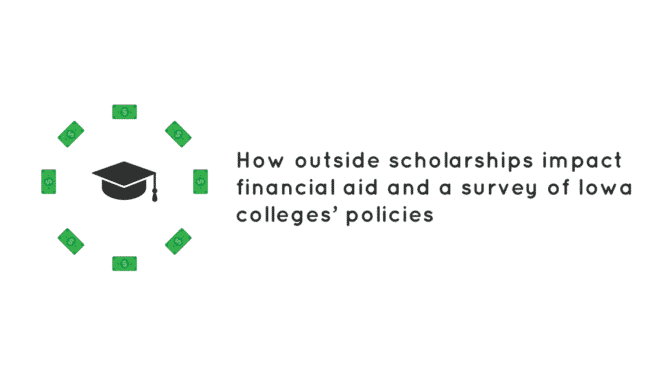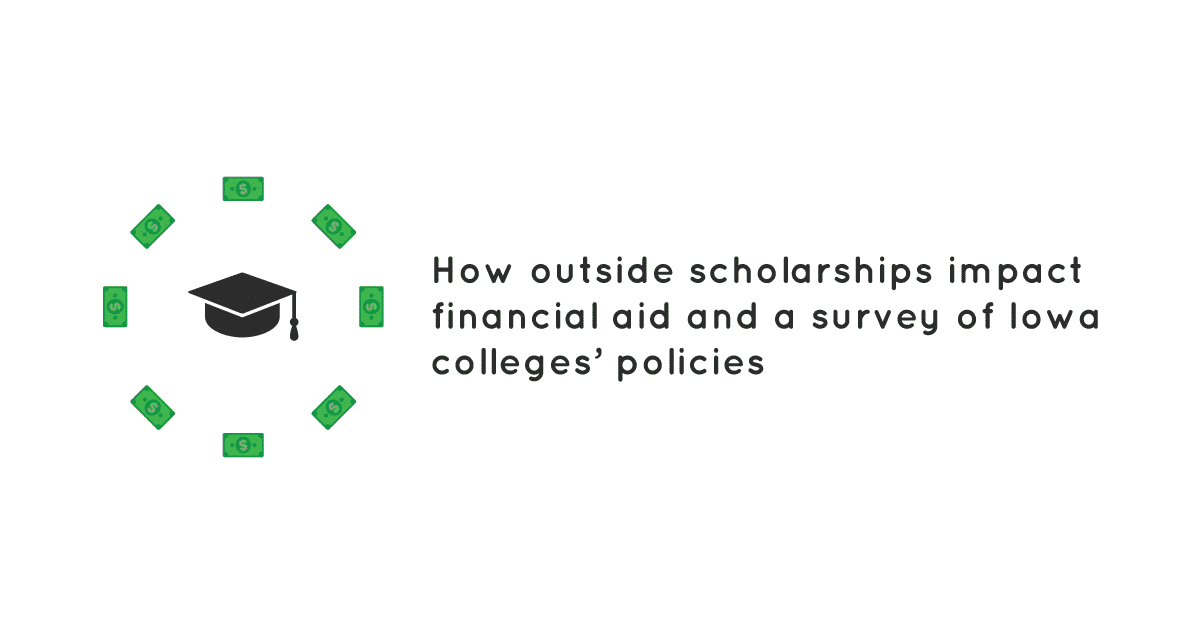Let's Get Started
You'll get the most value from financial planning if your specific goals and needs match a firm's philosophy and services. Let's learn more about each other.
Ready to Get Started?


Whether you’re in the home stretch of finalizing your college decision for the fall or just starting this process with a sophomore/junior student, spending some time researching and applying for outside scholarships can be well worth the effort. This money, also referred to as private scholarships, comes from organizations outside the school (thus the “outside” moniker), and the awards may be as small as $500 for local groups like the Rotary or tens of thousands of dollars for national groups.
Is your student eligible for need-based aid at the college of your choice? To find out, your family will need to fill out the FAFSA and determine your EFC. If the cost of attendance is higher than your EFC, you’re a candidate for need-based aid (even if you make a healthy income!).
If you do qualify for need-based aid, that will come from the college in one of three types, and if you’re far enough along in the process you’ll see it on the financial aid award letter. The three types of need-based aid are:
Remember: loans need to be paid back, so even though you are a candidate for need-based aid, part of your financial aid package may be money that is owed by the student after graduation!
Colleges have only so much money available to pay for need-based aid for students. Except for the richest colleges endowment-wise, most schools give students a mix of all three types of need-based aid, with loans filling in the gaps at the end. When your student gets an outside scholarship, that new money could free up some cash for other students needing aid. That’s the college’s perspective, but your family’s perspective is the opposite—every dollar of new scholarships your student brings in should ideally be used to decrease the amounts of loans you need to take out for school.
You want the college to protect your student’s gift aid (grants and scholarships) and reduce the self-help amount for every scholarship your student brings in.
How do you make this happen?
Now that you’re informed how outside scholarships may be used by the school, it’s up to you to check this with colleges!
A last note on outside scholarships: it is worthwhile to pursue these opportunities for college funding. Yes, it can take a lot of time to do the applications, and no, they’re not guaranteed money. But college is tremendously expensive and paying for it solely with loans is a recipe for financial stress after graduation. Even if your student spends 10 hours on scholarship applications and “only” gets a $500 scholarship out of the effort, that’s $50/hour earned for college!! Can s/he earn money any other way at that salary?
Go out and pursue these private scholarships, but make sure you know how your college of choice will deal with that money.
If you want to discuss further how to cut the cost of college and preserve your family’s finances, give me a call!
| School | Do they use outside scholarships to decrease gift aid? | Links to policies or notes: |
| Coe College | No | http://www.coe.edu/admission/financialaid/financialaidfaq |
| Mount Mercy | No | http://catalog.mtmercy.edu/financialaid/ |
| Grinnell College | No | http://ww3.grinnell.edu/admission/financial-aid/affording-grinnell/scholarships |
| University of Northern Iowa | No | From the financial aid office: It depends on the situation, in all cases that we can we reduce the loans first. |
| Loras College | No | From the financial aid office: We try to preserve as much of the “good funding” as we can when new scholarships come in. |
| Drake University | No | From the financial aid office: Outside scholarships won’t decrease Drake-related grants or scholarships. |
| Iowa State University | Maybe | Should contact the financial aid office to ask that Direct loans are reduced with the scholarship. |
| University of Iowa | Maybe | Should contact the financial aid office to ask that Direct loans are reduced with the scholarship. |
| Cornell College | Maybe | Should contact the financial aid office to ask that Direct loans are reduced with the scholarship. |
| Wartburg College | Maybe | Should contact the financial aid office to ask that Direct loans are reduced with the scholarship. |